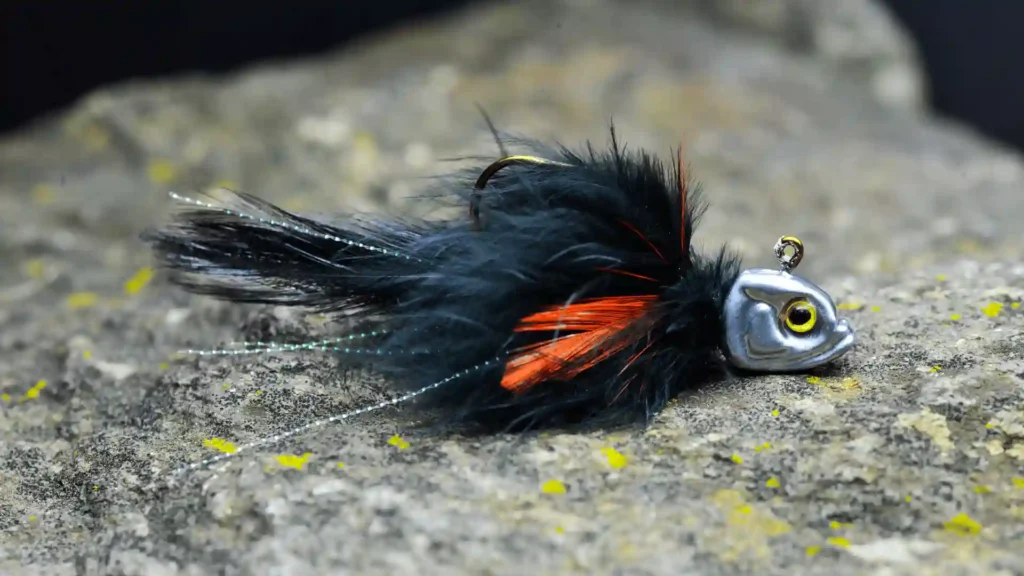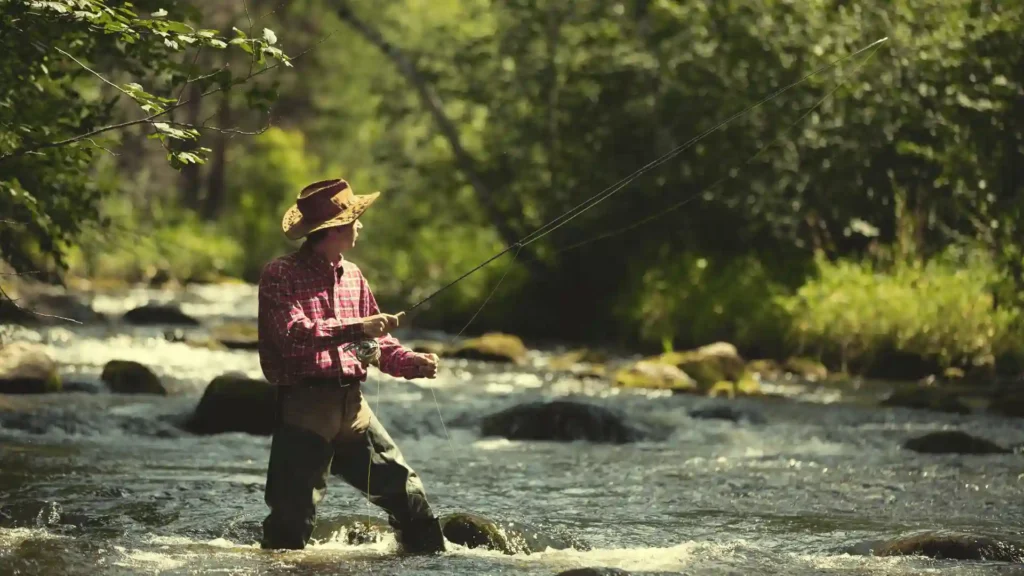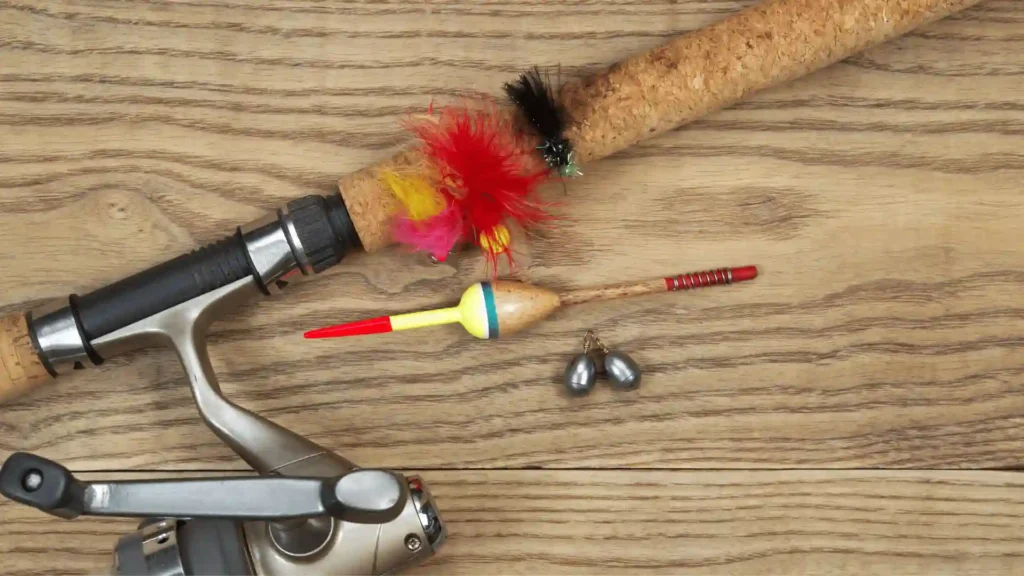How to Euro Nymph with Streamers | All You Need To Know

Are you tired of using traditional nymphing methods and want to try something new for trout fishing? Euro Nymphing with Streamers may be just the approach you need!
This dynamic technique combines the effectiveness of Euro Nymphing with the enticing presentation of streamers, making it a deadly approach to entice trout.
In this section, I will introduce you to Euro Nymphing with Streamers and discuss the basic techniques and strategies that can be applied to increase your success on the water.
We will delve deeper into Euro Nymphing for trout, explore the gear and equipment required, and introduce you to the fundamentals of streamer fishing.
What is Euro Nymphing for Trout
Euro Nymphing involves using specialized gear and techniques to present small and precise nymph patterns to trout. The aim is to get the fly to the fish quickly and without drag, enticing them to bite.
One big advantage of Euro Nymphing is its sensitivity to strikes. With a sensitive rod, long leader, and thin line, anglers can feel even the slightest bites, which is crucial in fast-moving water or streams with steep gradients.
When picking a wet fly, consider the water speed and the type of fish. Some work better in fast water, while others prefer slower currents. Adjust your casting and retrieval methods accordingly.
| Euro Nymphing Gear Checklist | |
|---|---|
| Euro Nymphing rod (typically 10-11ft) | |
| Lightweight reel | |
| Long leader (9-20ft) | |
| Thin line (monofilament or fluorocarbon) |
When to Use Streamers?
Streamer fishing can be effective year-round, but it is often most productive during periods of low light when trout are more likely to feed near the surface.
Early mornings and evenings are typically the best times to target trout with streamers. Additionally, streamer fishing can be particularly productive after a rainstorm or during high runoff when the water is slightly off-color.
Now that we have a basic understanding of streamer fishing and its tactics for Euro Nymphing, let’s explore the necessary gear and equipment to get started in the next section.
Streamer Fishing for Trout
Streamer fishing for trout has long been a popular technique among fly anglers. By mimicking small fish or other aquatic prey, streamers allow anglers to entice larger, more aggressive trout that may not be interested in traditional nymph patterns.
Regarding Euro Nymphing with streamers, the presentation techniques can vary significantly from traditional casting and stripping methods.
Instead, Euro Nymphing streamer tactics often involve a tight-line approach, with the streamer acting as the weight for the rig.
The Types of Streamers
Streamer patterns come in various shapes, sizes, and colors. Some imitate bait or crayfish, while others mimic leeches or aquatic invertebrates.
The most effective streamer patterns for Euro Nymphing will largely depend on the feeding preferences of the trout in your local streams or rivers. You cam also use it in ponds fly fishing.
Presentation Techniques
When Euro Nymphing with streamers, anglers often use a tight line approach and frequently contact the streamer throughout the drift. Dead drifting, swinging, and stripping are presentation techniques that streamers can use.
Dead drifting can be especially effective when targeting trout in slower-moving water while turning and stripping can be useful for triggering aggressive strikes from trout in faster currents.
Euro Nymphing Techniques for Streamer Fishing
Advanced nymphing techniques are essential for successful Euro Nymphing techniques for streamer fishing. These techniques, such as tightening and high-sticking, enable anglers to sink their streamers quickly and keep in touch with the flies during drifts.

One effective method for Euro Nymphing with streamers is using indicators. These can detect subtle strikes and make minor adjustments to your presentation.
A visible indicator provides the exact location of your streamer in the water column, allowing you to monitor and react to bites accordingly.
It’s also critical for anglers to have steady hands and a good sense of timing during their cast. A precise cast is essential to achieve proper depth and presentation of the streamer.
If you want to learn about techniques Check out Fly Fish Food.
Choosing the Right Streamer Patterns
Regarding Euro Nymphing with Streamers, selecting the correct fly pattern is essential to enticing and tricking the trout into biting it.
Different factors come into play when choosing the correct streamer pattern, and it’s critical to align your selection with the trout’s feeding preferences.
Size
The size of the streamer pattern plays a significant role in your success rate. As a general rule of thumb, larger sizes are more effective in faster-moving rivers and streams where the water is murky or has a higher flow rate.
Conversely, smaller sizes are more comfortable for the trout to chase. They are best utilized in still waters or slower streams.
Color
The color selection should be based on factors unique to the location and its surroundings. Like traditional nymphing, natural colors such as brown, olive, and black work best in clear, low-light conditions or waters with a sand or gravel substrate.
Brighter colors, like white, yellow, or chartreuse, are more effective in faster, murkier waters.
Profile
The streamer’s profile, or shape, is also a crucial element that should align with the trout’s feeding preferences. Bulkier, more significant profile streamers generally mimic baitfish, crawfish, and larger prey, while slimmer profiles mimic smaller prey.
The presentation of the streamer can also be adjusted to target specific prey or provoke a reaction strike in the trout.
The key to success is experimenting with different streamer patterns until you find the right match for your fishing location and the trout’s feeding mood.
Presenting Streamers with Euro Nymphing Tactics
When presenting streamers with Euro Nymphing tactics, several strategies can be employed to trigger bites from trout. As with Euro Nymphing, the key is to keep your presentation natural and drug-free, mimicking the look and movements of wild prey.
Dead Drifting
Dead drifting streamers are popular among Euro Nymphers, particularly in slower-moving water where trout are less likely to chase after a fast-moving fly. Cast your streamer upstream and allow it to drift naturally downstream.
Keep your rod tip high to maintain contact with the fly while minimizing drag. Pay close attention to any cramps or bumps in your line, as these could signify a trout taking the fly.
Swinging
Like dead drifting, swinging involves casting your streamer upstream and allowing it to come downstream at an angle to the current. This tactic is particularly effective in faster-moving water, where trout are likelier to pursue a moving target.
Start by casting across the current and let your fly swing across the stream. Keep your rod tip low and be ready for any strikes as your fly comes into view.
Stripping
Stripping is a popular technique for presenting streamers with Euro Nymphing tactics, particularly in Stillwater environments. Start by casting your streamer and letting it sink to your desired depth.
Once the fly is in position, strip it back in short, rhythmic movements, mimicking the motion of a wounded baitfish. Pay close attention to any subtle bumps or tugs in your line, as these could signify a trout taking the fly.
Each of these tactics lends itself to different water conditions and streamer patterns. Experiment with each to determine which is most effective for your fishing environment.
Combining Euro Nymphing techniques with streamers allows you to create a versatile and practical approach that will entice even the wariest of trout.
Streamer Fishing Strategies for Various Water Conditions
Adapting your Euro Nymphing streamer strategies based on different water conditions is essential to catch trophy trout. The approach to streamer fishing in fast-flowing rivers differs from techniques used in still waters or slow-moving streams.
When fishing in Euro Nymphing streams with streamer patterns, focus on finding pockets of slower-moving water where trout will likely be waiting for prey.
Target the plunge pools, eddies, and pockets of calmer water behind boulders and rocks for fast-flowing rivers.
Streamer fishing for trout in slow-moving streams requires a more subtle approach. Work streamer patterns through undercut banks, overhanging vegetation, and around sunken logs or boulders. Vary your retrieves, and watch your fly line for subtle takes.
When fishing still waters, focus on imitating baitfish and other swimming prey. Consider using intermediate or sinking fly lines paired with a longer leader to reach the depths where trout are cruising. Long, slow retrieves are often effective in still waters.
Streamer Fishing Strategies
| Water Condition | Approach |
|---|---|
| Euro Nymphing streams | Target slow-moving water and pockets of calm water behind boulders and rocks |
| Fast-flowing rivers | Target plunge pools, eddies, and pockets of calm water behind boulders and rocks |
| Slow-moving streams | Work streamers through undercut banks, around sunken logs or boulders, and overhanging vegetation. Vary retrieves and keep an eye on your fly line. |
| Stillwaters | Imitate baitfish and other swimming prey. Use intermediate or sinking fly lines paired with longer leaders for deep presentations. Use long, slow retrieves. |
To sum it up, adapting your Euro Nymphing streamer strategies to different water conditions is essential for success. Pay attention to water speed, structure, and depths to determine the most effective approach for each situation.
Streamlined Euro Nymphing Fly Line
| Fly Line Type | Uses |
|---|---|
| Thin Diameter Fly Line | Offers less resistance, improves sensitivity and contact with the flies, and better presentation of streamers. |
Using a thin-diameter fly line is beneficial while Euro nymphing with streamers, as it improves sensitivity and contact with the streamer for better presentation. It also offers less resistance, allowing you to achieve the right depth for the streamer quickly.
By incorporating these advanced nymphing techniques, fly anglers can take Euro Nymphing with streamers to the next level, increasing their chances of catching more trout and enjoying the sport.
Euro Nymphing with Streamers: Gear and Equipment

Regarding Euro Nymphing with streamers, having the right gear is crucial to your success on the water. Here are the essential items you need for this technique:
Rod Selection
A longer rod between 10-11 feet is ideal for Euro Nymphing. This length allows for easier line control and better presentation of your streamer flies in the water.
Leader Setup
When setting up your leader for Euro Nymphing with streamers, choose a tapered leader in the 3X to 5X range. Consider adding a tippet ring to make changing your tippet length faster and easier.
Fly Lines
Choosing the right fly line is essential for Euro Nymphing with streamers. A floating line will work for shallow waters, while a sinking line is needed for deeper waters. A sink-tip line can also be used if you need a variety of depths.
Wading Gear
Wading boots and a wading belt are necessary to maneuver the water safely. A wading staff can also help navigate slippery stream bottoms and fast currents.
Other Equipment
Lastly, bring your standard fly fishing gear, such as forceps, nippers, and a landing net. Consider wearing polarized sunglasses to help see through the water and spot those feeding trout.
Fine-Tuning Your Euro Nymphing Streamer Game
Now that you have a solid Euro Nymphing and Streamer Fishing foundation, it’s time to refine your skills further and improve your chances of a successful day on the water.
Here are some additional tips and tricks to keep in mind:
Read the Water
Take the time to study the water and understand where the fish are likely to be holding and feeding. Focus on areas with structure, such as riffles, seams, and drop-offs. Adjust your approach based on the depth and speed of the water you’re fishing.
Proper Fly Placement
When Euro Nymphing with Streamers, your fly placement is critical. Make sure you’re presenting your fly in the trout’s feeding zone by adjusting your weight and leader length.
Keep your line tight to detect any subtle takes, and be ready to set the hook at the slightest hint of a strike.
Adapt to Trout Behavior
Trout behavior can vary throughout the day, so you must constantly adapt your approach to stay productive. If the trout seems sluggish or unresponsive, try changing your presentation technique, fly pattern, or nymphing depth.
Experiment with Retrieve Speed and Depth
Don’t be afraid to use different retrieve speeds and depths to find what works best for your target fish. Try dead-drifting your fly, stripping it in short bursts, or swinging it through the current. Vary the speed and depth until you start getting bites.
Stay Persistent
Lastly, keep going if you’re not having immediate success. Even the most skilled anglers have slow days on the water. Stay persistent, keep experimenting, and enjoy the time you spend outside.
Fine-Tuning Your Euro Nymphing Streamer Game
Euro Nymphing with Streamers has enhanced my trout fishing by combining Euro Nymphing principles with streamer techniques. In this article, we’ve covered gear selection, advanced tactics, and streamer presentation, along with tips for adapting to different water conditions.
By integrating these strategies into your fishing, you can elevate your game and enjoy more success on the water. So, grab your gear and experience the thrill of Euro Nymphing with Streamers. Tight lines!
What is Euro Nymphing with streamers?
Euro Nymphing with streamers is a specialized technique combining Euro Nymphing and streamer fishing elements. It involves using weighted streamer patterns, typically smaller in size, and tightening or high-sticking techniques to fish the streamers similarly to nymphs.
How effective is Euro Nymphing with streamers?
Euro Nymphing with streamers can be highly effective, especially when targeting trout in various water conditions. The technique allows for precise presentations and natural drifts, making it enticing for trout to strike.
Additionally, the combination of streamer patterns and Euro Nymphing tactics can trigger aggressive responses from trout.
What essential Euro Nymphing techniques can be applied while using streamers?
Some essential Euro Nymphing techniques applied while using streamers include tightening, high-sticking, and indicator techniques. These techniques help maintain contact with the streamer, detect subtle strikes, and control the presentation. They allow you to fish streamer patterns effectively in various water depths and currents.
What types of streamers are suitable for Euro Nymphing?
When Euro Nymphing with streamers, selecting streamer patterns that are appropriately sized for the trout’s feeding preferences is essential. Generally, smaller streamers in sizes #2 to #6 are commonly used. The streamer patterns should imitate the local baitfish or aquatic insects that trout feed on in your fishing area.
How do you present streamers effectively during Euro Nymphing?
To present streamers effectively while Euro Nymphing, you can employ various tactics such as dead drifting, swinging, or stripping. Slow drifting allows the streamer to drift naturally with the current while hanging, imitating a small baitfish swimming across the water. Stripping involves imparting a jerking or pulsating motion to the streamer to mimic wounded prey.
What strategies should I consider for Euro Nymphing with streamers in different water conditions?
When Euro Nymphing with streamers, you should adapt your strategies based on the water conditions you encounter. You can focus on streamer presentations near riffles and seams in fast-flowing rivers. In slow-moving streams, concentrate on pockets and deeper pools. Use a retrieve or strip the streamer slowly in still waters to entice trout to strike.

Meet Ibrahim Khan, an avid angler and author in Fishing Teach. He shares his wealth of knowledge from his 16 years of experiences in fishing. His articles are a captivating blend of practical insights and thrilling tales that invite readers into the enchanting world of fishing.
Ibrahim’s guides are your go-to guide in the realm of fishing on this informational site. Hailing from a coastal paradise, Ibrahim’s passion for angling is the heartbeat of his life.
